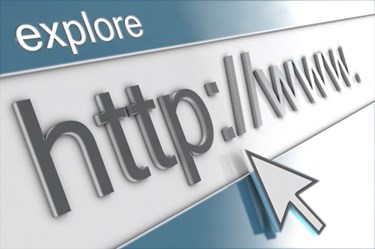Harnessing The Power Of The Browser To Improve Care

By Ilan Paretsky, Vice President of Marketing, Ericom Software
As mobile technology becomes engrained into almost all facets of life and business, the rise of mobile healthcare, or mHealth, is not surprising. Healthcare professionals in private practices, hospitals, retail clinics, and non-profit settings increasingly rely upon mobile devices such as laptops, smartphones, and tablets to deliver care.
Slowly but surely, mobile technology is being integrated into various aspects of the healthcare — 50 percent of healthcare providers use mobile technology at work on a daily basis — from administrative tasks to diagnosing and treating patients.
mHealth Is More Than Mobile Devices
Though mobile devices have obviously provided tremendous benefits in terms of advancing patient care, some health organizations are still not reaping the full benefits of mobile technology. But, with a simple solution, they can. Harnessing the full power of mHealth requires a partnership between mobile devices and browser-based remote access technology.
Easily scalable, browser-based remote access improves healthcare processes and patient care in settings as small as family-owned practices and as large as hospitals with multiple campuses by allowing providers to access a variety of patient management and clinical applications such as McKesson Ansos, MISYS, GE Prism and ScriptMed through any standard HTML5 browser and from any mobile device. Remote access centralizes application management, streamlining healthcare IT infrastructure and improving productivity to ultimately improve the patient experience.
Browser-based remote access technology and mobile devices are a perfect combination, allowing healthcare providers to:
- Save Money On Maintenance And Device Purchases
Giving physicians browser-based access to applications, files, and information removes the need for IT departments to install software on endpoint devices; this virtually eliminates costs associated with endpoint installation and ongoing maintenance.
However, partnering remote access with mobile devices takes cost efficiency a step further by making BYOD initiatives a possibility. Because clinicians can access anything they need to provide care through browsers, they don't need specialty devices — virtually all mobile devices have internet access. With this flexibility, clinicians can use their own devices, reducing the amount of devices that healthcare organizations need to provide for clinicians and thereby significantly decreasing IT costs.
- Maintain Patient Information Easily And Securely
According to a 2015 study conducted by the Office of the National Coordinator for Health Information Technology, more than eight in 10 office-based physicians have already adopted an EHR system. As the trend to maintain electronic records continues across healthcare organizations, remote access has the power to give clinicians access to patient records and medical imaging files from any device, using a standard browser. Using remote access technology, accessing a library of patient files and other information is as simple as logging into an online portal.
In addition to giving providers the flexibility to diagnose patients more quickly, remote access allows providers to centrally store sensitive data and patient information without saving anything onto physical devices. Browser-based remote access enhances security and privacy efforts, keeping patient information safe and making it simple for healthcare organizations to comply with HIPAA policies.
- Improve The Patient Experience
The use of mobile devices in the medical field is already helping providers meet their main goal of providing high quality patient care in a secure, reliable, and cost effective manner. Browser-based access can increase the benefits associated with mobile technology by helping to streamline and simplify the entire process of administering care, from diagnosis and treatment to administrative tasks. The flexibility to access and administer care from any device and any location allows clinicians to provide even more superior, patient-centered care.
Browser-based remote access is the key to unlocking the full potential of mobile technology in healthcare settings. The flexibility to provide superior care anywhere and using any device removes limitations and allows healthcare providers to focus on the most important priority: administering care that patients can rely upon.
About The Author
Ilan Paretsky is the Vice President of Marketing at Ericom Software and is responsible for the global marketing activities of the company. Prior to joining Ericom in 2005, Mr. Paretsky held various leadership positions in marketing, business development, project management, and software development in the global software and telecom industries.
